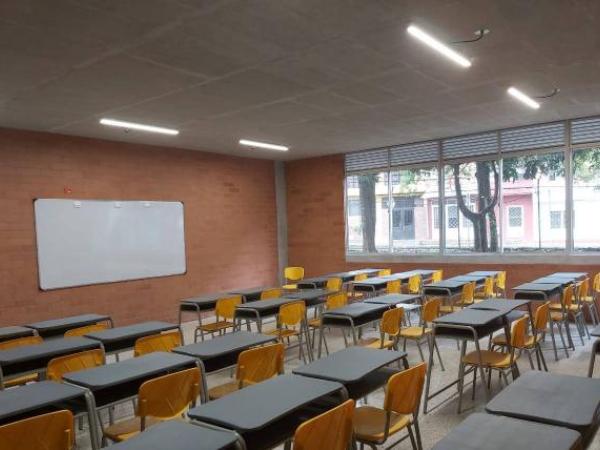Mobility in cities can be chaos for some, but in other regions of the country, it becomes quite a journey.
The latest report revealed by the National Administrative Department of Statistics (Dane) on quality of life, revealed how minors move to their educational institutions every day.
(See: The best cities in the world in 2021, according to ‘Time Out’ magazine).
In the report the 61.4% of children nationwide traveled on foot in 2021 (62.7% men and 60% women), a figure that continues to increase year after year, since in 2020 it was 57.6% and in 2019 it was 51.2%.
In the case of rural areas, this figure reaches 65.4%, which represents 1.5 pp more than in 2020, and 8.1 pp more compared to 2019.
These figures show a high dependence on this mode of transport, especially in the most remote parts of the country. In the cities, this figure was 59.9% and in 2020 it was 55.6%.
(See: 60% of Colombian households had internet access in 2021).
By departments, Guainía took first place where 78.4% of children travel on foot, followed by Chocó with 76.8%, Bolívar with 75.7%, and Vichada with 75.5%. In last place are Casanare with the registration of 43.4%, Arauca with 42.4% and San Andrés, 18%. Bogotá is positioned with 59.3%.
For Fernando Rojas, an expert in mobility, this trend reveals a reality. “In many places in Colombia, children have to make long journeys to urban centers or rural schools between one and six hours.Rojas said.
And I add: “For many it is an adventure, but in reality it is an inhumane situation that puts them at risk.”.
(See: This is how families live in Colombia, after the arrival of covid).
OTHER MEANS OF TRANSPORTATION
After the walks Getting to educational institutions by car has become the means par excellence.
As of 2021, 14.2% of students traveled by private vehicle. This figure, in the last three years has increased, in 2020 it was 1.0 pp less, that is, it was 13.2%. In 2019, it was 13.7%.
In the populated centers, only 11.5% of students arrive by private car, 1.5 pp more than in 2020. In the main capitals of the territory, this figure is 15.2%, that is, 3.7 pp more than in rural areas.
Public transport is positioned in third place. Nationwide, 13% of students take some type of bus. Unlike the ‘on foot’ modality, this has been falling over the years.
(See: Workers prefer well-being and rest instead of promotions).
By 2020, 15.5% of students used this means of transport, and by 2019, it was 2.2 pp more, that is, 17.7%.
In rural areas, only 7.1% of children take public transport, a figure that has been decreasing annually. In 2020, 7.7% of students used it, and by 2019, the figure was 8.8%.
However, in urban areas, there is not much difference in trend changes.
In 2021, 15.2% of the students in the municipal capitals traveled by bus. In the year of the pandemic, this figure was 2.8 pp (18%) higher and in 2019, 5.4 pp higher than in 2021 (20.6).
On the other hand, the school route does not have a high percentage share among the modes of student transportation. In 2021, of the national total, only 6% of children in the country were able to access this service.
Disaggregated by location, paradoxically there is a greater participation in rural areas than in the city.
In 2021, 7.8% of young people enrolled in school attended classes through this service, however, as in other modalities, the indicators have fallen over the years. This has inflated the ‘on foot’ mode indicator. In 2020, this figure was 9.3% and in 2019 it was 13.6%.
In the cities, this service reaches 5.4% of the children who attend educational centers. In 2020, it was 1.6 pp higher than in the year of the report (7%) and compared to 2019, 2.3 pp less (7.7%).
The boats, planches or canoes are less used modes of transportation, however there are children who must access them to get to their schools.
In urban areas there is no record of it, but in rural areas still 2.4 of children must use it. On horseback, it is a practice that since 2019 has been stopped in the cities to go to the educational establishment, but in rural areas it continues to occupy 0.4% of the list (5.1 percentage points less than in 2019).
PAULA GALEANO BALAGUERA
Journalist Portfolio
[email protected]







